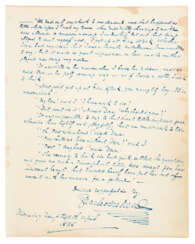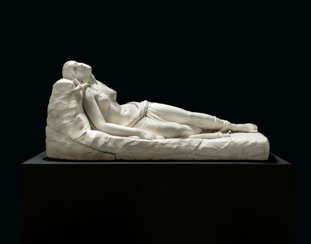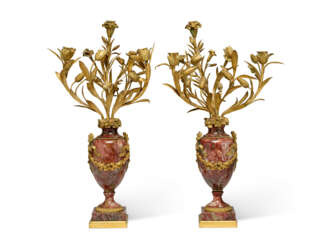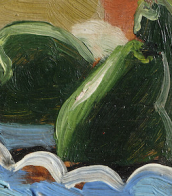five o&

Georgia Totto O'Keeffe was an American modernist artist. She was known for her paintings of enlarged flowers, New York skyscrapers, and New Mexico landscapes. O'Keeffe has been called the "Mother of American modernism".






Ben Nicholson, an English artist, is celebrated for his significant contributions to abstract art. Born into an artistic family, Nicholson's work evolved from figurative art to embrace and lead in the development of abstract art in Britain. His early career was marked by experimentation with Cubism and interaction with influential artists like Barbara Hepworth, Henry Moore, Piet Mondrian, and Pablo Picasso, which profoundly shaped his artistic direction.
Nicholson's art is notable for its sensitive balance of tone and texture, employing dynamic and rhythmic lines that abstractly reference architectural forms and societal structures. His technique involved meticulous carving, painting, and the innovative use of color, especially in his later works where he explored the interplay of light and form to create poetic, abstract landscapes. His contributions were not just confined to his own practice; through collaborative projects and influential writings, he played a pivotal role in the discourse of modernist art, advocating for abstract art's broader appreciation.
Noteworthy pieces of Nicholson's work, including "March 1963 (Archimedes)" and "June 1961 (green goblet and blue square)," among others, are housed in prestigious collections like the Tate Gallery, Tate St Ives, Kettle's Yard Art Gallery in Cambridge, The Hepworth Wakefield, Pallant House Gallery in Chichester, and the Pier Arts Centre in Stromness, Orkney.
Nicholson's legacy as a pioneer of abstract art in the UK is secured through his innovative approaches and influential partnerships, which have left an indelible mark on the landscape of 20th-century art. His work continues to inspire and resonate, reflecting a deep understanding of the abstract's power to express the complexities of human experience and the natural world.
For collectors and experts in art and antiques interested in the pivotal movements of 20th-century art, Ben Nicholson's oeuvre offers a rich field of study and appreciation. To stay updated on new product sales and auction events related to Ben Nicholson's work, signing up for updates is a step towards deepening your understanding and appreciation of this key figure in modernist art.


Kuzma Sergeyevich Petrov-Vodkin (Russian: Кузьма Сергеевич Петров-Водкин), a Russian painter, synthesized various traditions of global art, crafting a unique and deeply personal visual language. Born in 1878 in Khvalynsk, Saratov oblast, Russian Empire, Petrov-Vodkin is celebrated for his innovative approach to perspective, color, and composition, which positioned him as a pivotal figure in the art world of his time. He passed away in 1939 in Leningrad, now known as St. Petersburg, Russia.
Petrov-Vodkin's education in the arts took him from the Baron Stieglits School in Saint Petersburg to the Moscow School of Painting, Sculpture, and Architecture, where he was mentored by notable artists such as Valentin Serov. His studies abroad, including in Munich under Anton Ažbe, further enriched his artistic development. Notably, his marriage to Maria Jovanovic in Paris in 1906 marked a significant personal chapter, providing him with a lifelong companion and collaborator.
His work is distinguished by the use of "spherical perspective," a technique that distorts the drawing to emphasize the globe's curvature, making the viewer feel simultaneously distant and intimately close to the subject. This method, influenced by Byzantine iconography's inverted perspective, is evident in works like "Death of a Commissar" and "In the Line of Fire." Petrov-Vodkin's palette darkened over time, and his subjects diversified to include still life and portraiture, reflecting a broader exploration of theme and form. Despite facing health challenges, including pulmonary tuberculosis which limited his painting in later years, he remained prolific in other creative avenues, including literature, where his semi-autobiographical works are held in high regard.
His legacy is enshrined in the Russian Museum in St. Petersburg, which houses the largest collection of his works and dedicates a room to his art in their permanent exhibition. Additionally, a memorial museum in his hometown of Khvalynsk pays tribute to his contributions to Russian and Soviet art.
For collectors and art and antiques experts intrigued by Petrov-Vodkin's profound impact on Russian art, signing up for updates can ensure access to the latest sales and auction events related to his oeuvre. This subscription is a gateway to exploring the depth and breadth of Petrov-Vodkin's artistic achievements and ensuring enthusiasts are well-informed of opportunities to engage with his work.


Charles Dickens, full name Charles John Huffam Dickens, is the most famous British writer of the Victorian era, a classic of world literature.
From childhood the future writer learned all the hardships of life in poverty: his father in prison for debts, hard work in a factory. Then service stenographer in court and reporter developed in him a strong attachment to journalism and contempt for both the law and parliament.
Dickens had many talents: in addition to literary work, he was an actor, published periodicals, arranged numerous literary readings, where he reveled in the admiration and love of the public. Fecund and versatile, Charles Dickens wrote many brilliant and often comic works. His novels cover a wide range of social, moral, emotional and other aspects. As a subtle psychologist, he is also very interested in the most ordinary people, but also the eccentric, the flawed, and even the insane.
Dickens was immensely popular around the world during his lifetime. His intellect, worldview, and deep reflections on society and its faults enriched his novels and made him one of the great figures of nineteenth-century literature, an influential spokesman for the conscience of his time.
Dickens' best-known and most popular novels are The Pickwick Club Posthumous Notes, Oliver Twist, Nicholas Nickleby, David Copperfield, Cold House, A Tale of Two Cities, Our Mutual Friend, Great Expectations, and The Mystery of Edwin Drood.

,_by_Johann_Baptist_II_Lampi.jpg)
Antonio Canova was an Italian sculptor of the late 18th and early 19th centuries. He is known as a bright representative of neoclassicism in European fine art. Canova was a follower of traditions of artists of antiquity and Renaissance. Among admirers of his creativity there were many representatives of ruling dynasties of Europe.
Antonio Canova himself created more than 50 statues, and together with his assistants - about 180 works. He gained influential patrons and had a reputation as the most important European sculptor of his time. Among his customers was Napoleon Bonaparte, whose statue Canova carved from marble, depicting the emperor as Mars.
Most of Canova's works today decorate the expositions of the world's leading museums, such as the halls of the Louvre and the Hermitage.


Jean Philippe Arthur Dubuffet, a pioneering French painter and sculptor, revolutionized the post-war art scene with his radical Matterism movement. He defied the conventional aesthetics of his time, championing "low art" and propelling a more genuine, humanistic image-making approach.
Dubuffet, born in Le Havre, France, in 1901, was a prominent figure at the Ecole de Paris and an advocate for Art Brut, or "raw art", which sought to capture art's purest form. His works were characterized by a rough, unrefined aesthetic, which eschewed academic norms in favor of spontaneity and authenticity.
Art enthusiasts and experts can view Dubuffet's innovative works at institutions like the Museum of Modern Art, where his legacy as a groundbreaking artist continues to be celebrated. His Matterism philosophy has left an indelible mark on the art world, inspiring generations of artists to embrace the beauty in the unconventional.
For those interested in the avant-garde and the legacy of Jean Philippe Arthur Dubuffet, sign up for our exclusive updates. This service is designed for connoisseurs and professionals in the art and antique sector, promising alerts on new insights and events strictly related to Dubuffet's profound influence.


Henri-Robert-Marcel Duchamp, a pioneering French artist, is celebrated for his profound influence on 20th-century art and culture. Duchamp's work transcended traditional mediums, embracing painting, sculpture, and conceptual art, thereby redefining the very nature of artistic creation. His audacious approach to art, marked by intellectualism and wit, challenged conventional perceptions of beauty and utility, making him a central figure in the development of modern and postmodern art.
Duchamp's most notable contributions include his ready-mades—ordinary manufactured objects that he selected and presented as art. This innovative concept questioned the role of the artist and the creation process, exemplified by his famous piece, "Fountain," a porcelain urinal that radically altered the landscape of art by its mere presentation in 1917. His other significant works, like "Nude Descending a Staircase, No. 2," showcased his fascination with movement and mechanization, further cementing his legacy as a visionary.
Duchamp's influence extends beyond his creations, as he played a vital role in shaping the Dada movement and conceptual art. His ideas and artworks continue to inspire artists, collectors, and experts in the fields of art and antiques. Museums and galleries worldwide, including the Philadelphia Museum of Art and the Museum of Modern Art in New York, proudly house his works, attesting to his enduring relevance.
For those keen on exploring the intersections of art, culture, and history, Duchamp offers a rich tapestry of innovation and controversy. Collectors and art enthusiasts are invited to sign up for updates on new product sales and auction events related to Henri-Robert-Marcel Duchamp, ensuring they remain at the forefront of developments in this captivating domain.







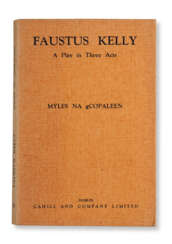

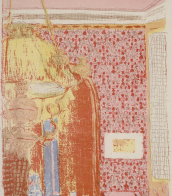



![O primeiro[-quinto] livro das ordenaçoẽs](/assets/image/picture_4944552/4231c/b426523863a4da15a9ae5e4b1348fe611759413600jpg__fix_374_244.jpeg)
![O primeiro[-quinto] livro das ordenaçoẽs](https://veryimportantlot.com/assets/image/picture_4944552/4231c/b426523863a4da15a9ae5e4b1348fe611759413600jpg__fix_374_244.jpeg)























![[QUARRYMEN BANJO] – Arthur O. Windsor Musical Instrument Maker, Birmingham, UK](/assets/image/picture_4035446/cd16c/03557bd79d644933939928516b2f46f21720562400jpg__fix_374_244.jpeg)
![[QUARRYMEN BANJO] – Arthur O. Windsor Musical Instrument Maker, Birmingham, UK](https://veryimportantlot.com/assets/image/picture_4035446/cd16c/03557bd79d644933939928516b2f46f21720562400jpg__fix_374_244.jpeg)





